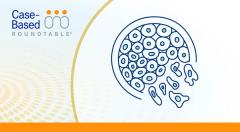
The Addition of Daratumumab to Multiple Myeloma Regimens Deepens Responses
Joshua Richter, MD, provides insight on the impact of the addition of daratumumab to treatments for patients with multiple myeloma.
Episodes in this series

Joshua Richter, MD, associate professor of medicine in the Tisch Cancer Institute and director of multiple myeloma at the Blavatnik Family-Chelsea Medical Center at Mount Sinai, discusses the use of daratumumab (Darzalaex) when added to treatment regimens for patients with multiple myeloma and how the addition of the monoclonal antibody provides deeper and more durable responses in this patient population.
The use of daratumumab in patients with multiple myeloma has become a standard of care based off the results of the phase 3 GRIFFIN study (NCT02874742) that showed the addition of daratumumab to the triplet regimen of lenalidomide (Revlimid), bortezomib (Velcade), and dexamethasone (D-RVd) led to stronger responses in patients than RVd alone.
This was reflected in the primary end point of the study with stringent complete response (sCR) favoring the quadruplet regimen at 42.4% vs 32.0% in the RVd arm (odds ratio, 1.57; 95% CI, 0.87-2.82; P = .068). Moreover, at a longer follow-up of a median of 22.1 months, these responses deepened with sCR rates improved for D-RVd vs RVd at 62.6% vs 45.4%, respectively (P = .0177). the minimal residual disease (MRD) negativity rates (10-5 threshold) in the intent-to-treat population also favored the addition of daratumumab to treatment vs omitting it at 51.0% vs 20.4%, respectively (P < .0001).
Additionally, Richter says the progression-free survival (PFS), partial responses (PRs), and very good partial responses (VGPRs) were better in both the quadruplet regimen and triplet regimen of daratumumab, lenalidomide, and dexamethasone (DRd) in this patient population.
TRANSCRIPTION:
0:08 | Adding daratumumab to earlier regimens, we know, really improves [patient] outcomes. You know again, GRIFFIN showed us that taking VRd—which has become a standard in the [United States] and many other parts of the world—adding daratumumab gives you higher response rates and mostly deeper responses because almost everyone responds to VRd anyway. It's that you get deeper remissions, more CRs, more MRD negative patients, and those are the patients that tend to do best. The deeper your remission, [the response] tends to do better.
0:38 | So that's why so far, we're seeing PFS advantages for the quadruplet [regimen], is because we have more patients achieving a CR when we add daratumumab, and more patients achieving MRD negativity when we add daratumumab. The same thing is true for even the triplet [regimen] for patients that we don't take the transplant with DRd. When we compare DRd to [lenalidomide and dexamethasone] alone, the overall response rates certainly goes up. But then again, we still have more deep responses with more PRs, more VGPRs, and more MRD negative [patients]. So, it's really that the addition of daratumumab gets us more deep remissions and more of those patients getting better outcomes.

















































